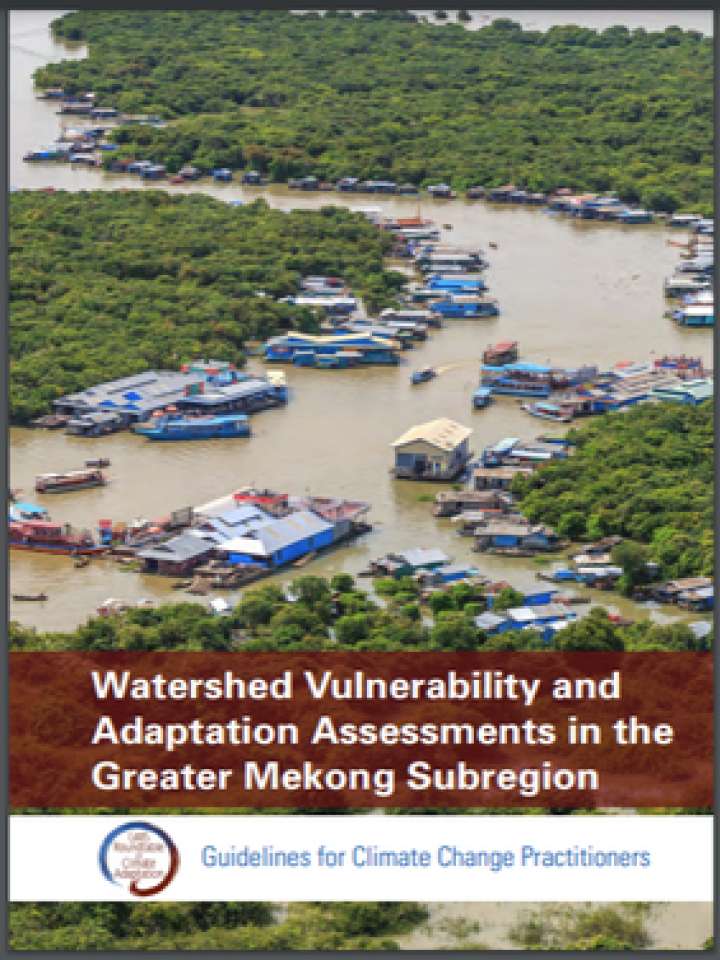Watershed vulnerability and adaptation assessments in the Greater Mekong Subregion
These regional guidelines on watershed-scale vulnerability and adaptation assessments (W-VAAs) are the product of a multiyear collaboration among the institutions listed above. The guidelines synthesize the shared knowledge and experience of the roundtable partners in developing frameworks for vulnerability and adaptation assessments (VAAs) and implementing them in the GMS over the past decade. Specifically, these guidelines incorporate the direct experience of recent projects that have used watersheds as an organizing element for climate-change VAAs. The Mekong River Basin is known for its physical, biological, and cultural diversity. In fact, it routinely garners international headlines because of the new species discovered there every year. But for each one of these reports, there are countless more stories about uncertainty, not just regarding the basin’s ecology, but also the societies of this six-nation region, as their exposure to the effects of climate change is predicted to be among the most extensive in the world.
This publication outlines five main steps in conducting a W-VAA. These are: scope the assessment context, particularly the decision or policy it is intended to influence; conduct a baseline vulnerability assessment; identify, evaluate, and prioritize adaptation options; integrate adaptation options into action plans and watershed-management plans; and synthesize learning and improve the W-VAA process. It further provides seven replicable examples of how W-VAAs are being implemented in the Mekong region, with each example illustrating specific W-VAA principles and steps in the W-VAA process.
Explore further
